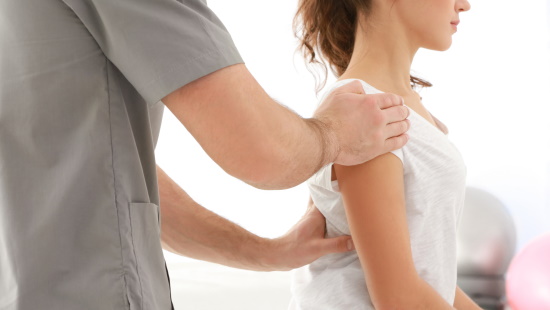Degenerative Spinal Conditions

Wear and tear of the spinal discs or joints is part of the natural aging process. Most everyone will experience it to some degree, likely after age 40.
A common condition associated with wear-and-tear changes in the spine is spinal stenosis. It occurs when the spaces in the spine narrow and put pressure on the spinal cord and nerve roots. Though the most common cause of spinal stenosis is osteoarthritis, it can be caused by other conditions.
Degenerative disc disease, a common cause of neck and back pain, also is associated with wear and tear on spinal discs over time. In some cases, degenerative disc disease may lead to osteoarthritis in the facet joints of the spine.
Spinal Stenosis
The two main types of spinal stenosis are:
- Cervical stenosis—narrowing of the spinal canal in the neck/uppermost area of your spine
- Lumbar stenosis—narrowing of the spinal canal in the lower back
Symptoms
Symptoms of spinal stenosis can vary but may include:
- Buttock/leg pain or arm pain that radiates to the back or neck
- Tingling, weakness or numbness in the foot, leg, hand or arm
- Walking/balance issues
Many people do not have back pain or neck pain.
Diagnosis and Treatment
Spinal stenosis can be detected via diagnostic imaging (e.g., X-ray, MRI or CT scan).
Treatment options vary and will depend on the severity of your symptoms. Your doctor may recommend:
- Pain medication (NSAIDs such as aspirin, ibuprofen and naproxen)
- Pain management injections (cortisone or steroid shots) or procedures
- Physical therapy
If surgery is necessary, you may require a laminectomy or spinal fusion.
Degenerative Disc Disease
Common symptoms of degenerative disc disease include:
- Pain in the lower back and/or neck that may extend to your buttocks or legs, often as a result of prolonged sitting
- Numbness or weakness in your arms or legs
Sometimes, degenerative disc disease does not cause symptoms.
Diagnosis and Treatment
In checking for degenerative disc disease, your doctor will conduct an in-person physical exam and may order imaging tests (MRI, X-ray, CT scan, etc.).
Treatment may include:
- Physical therapy and exercise
- Hot and cold treatments (ice packs and heating pads)
- Pain medicine injections (e.g., steroid injections)
- Over-the-counter pain medications (NSAIDs)
Surgery for disc degeneration is rarely performed. However, it may be necessary if your symptoms persist, particularly if they lead to nerve compression. Surgical options may include minimally invasive spinal infusion and discectomy, laminectomy and disc replacement.
Contact Us
To learn more about our services or to schedule an appointment, call the spine team at UM St. Joseph Medical Center at 410-337-4882. Meet our expert spine team.
